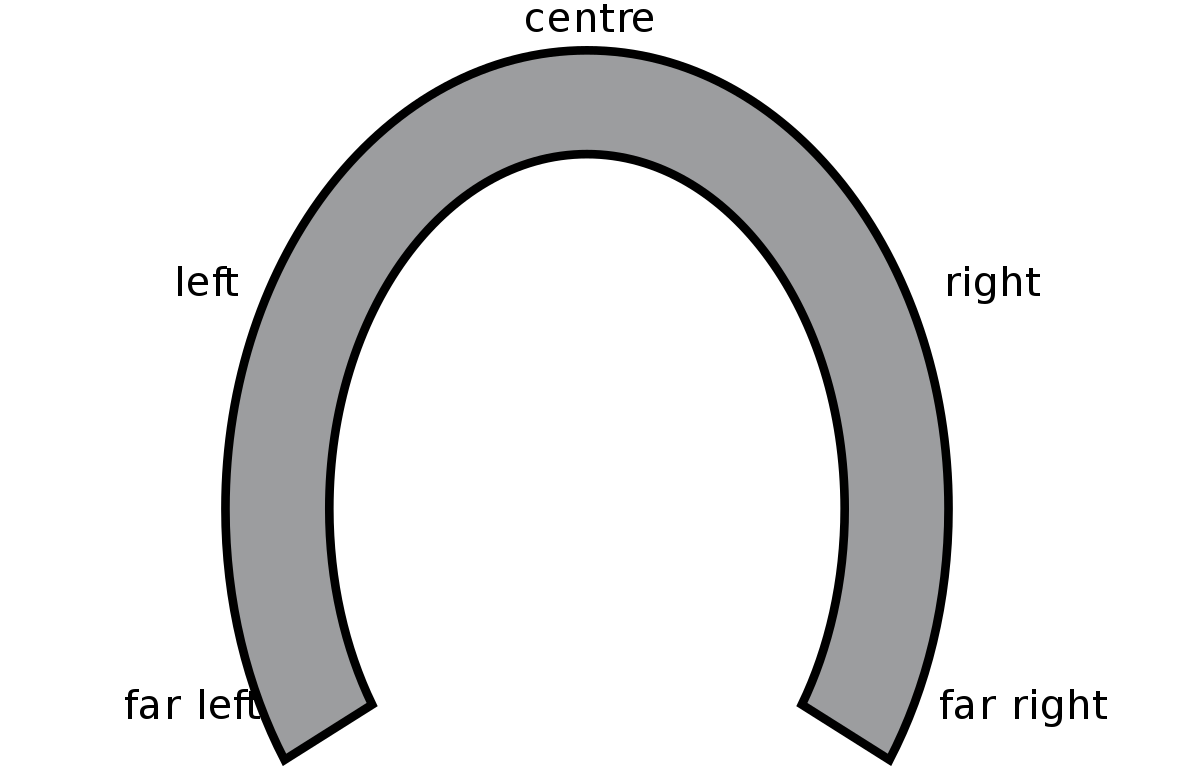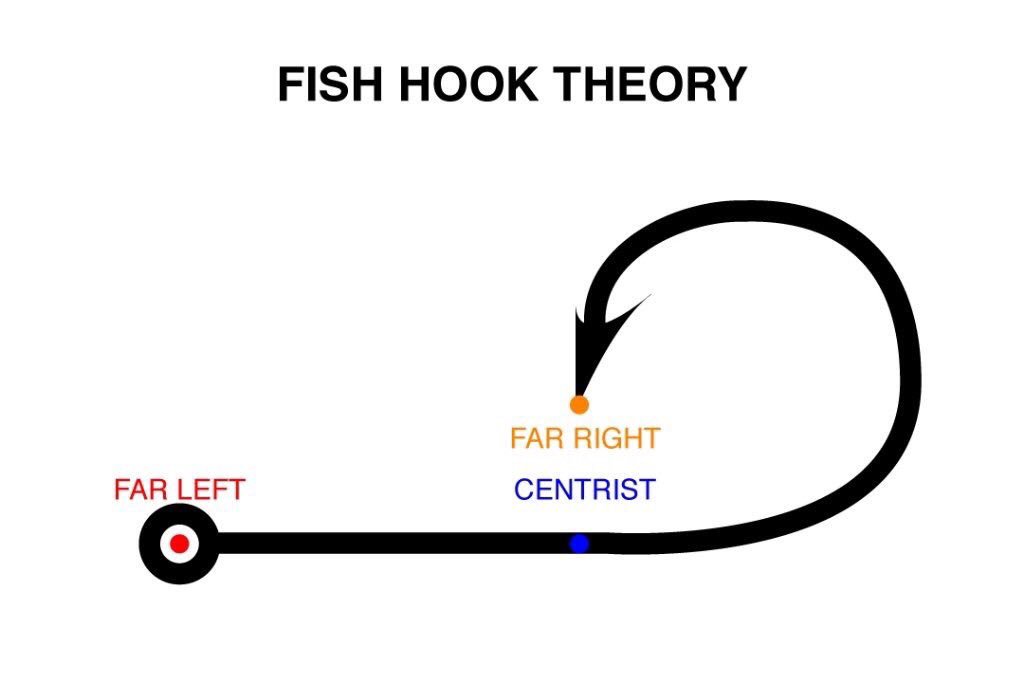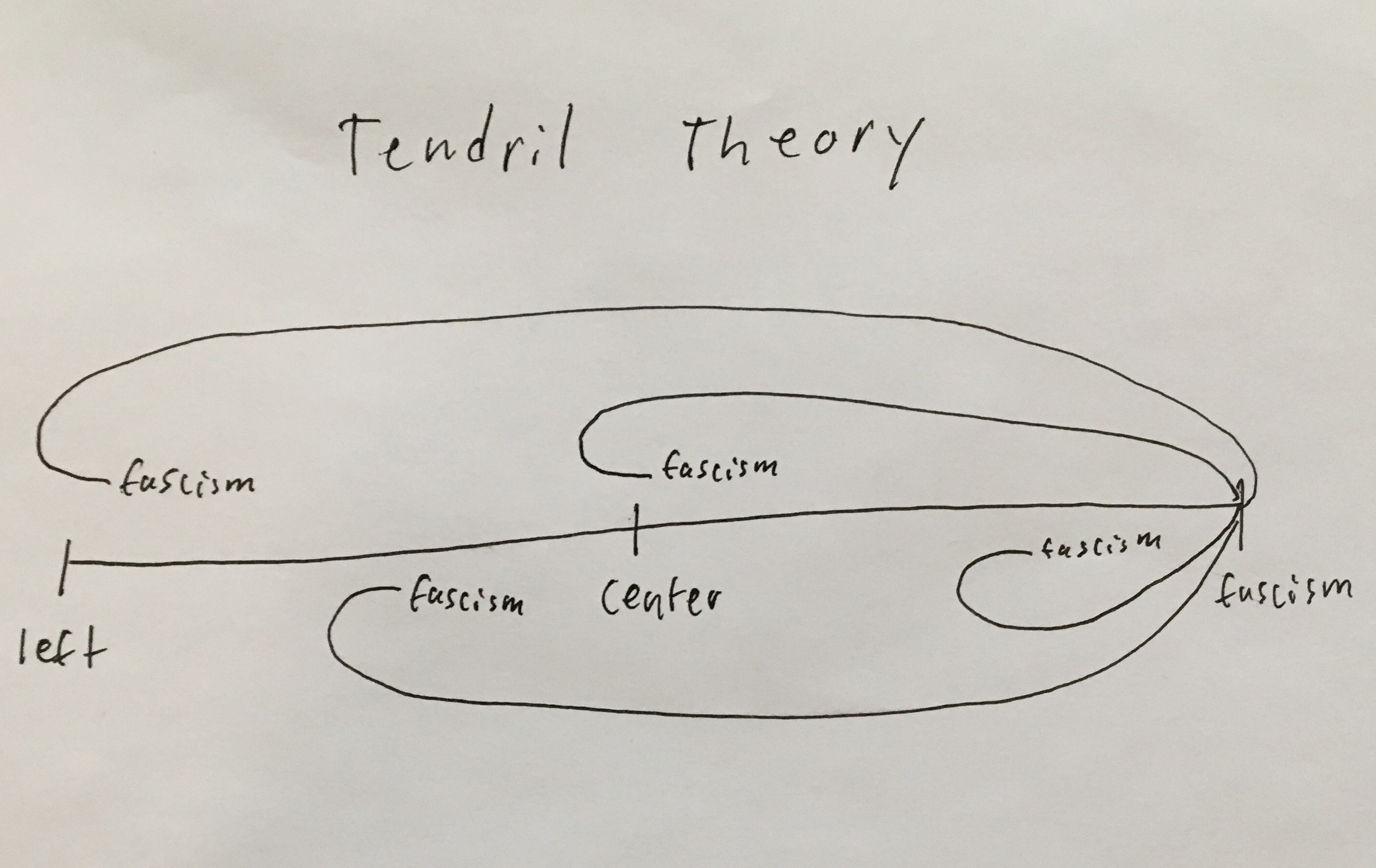IMAGE

World War II did not start with Nazi Germany invading Poland. It started with both Nazi Germany and the Soviet Union invading Poland. Communists joined with fascists to unleash the most destructive war in the history of the world.
Philosopher Jean-Pierre Faye looked at the Molotov-Ribbentrop Pact and other instances of right/left coordination, and decided that they were no coincidence. Instead, he believed the confluence could be explained by what he called Horseshoe Theory. Horseshoe Theory says that the right and left are not on opposite ends of a linear political continuum. Instead, the political spectrum is bent, like a horseshoe, with the far right and far left at the ends bending around so they almost touch each other.
For centrists, and for right-wingers, Horseshoe Theory is a convenient chunk of heavy iron to toss in the faces of left-wing opponents. But its very convenience should be treated with suspicion. Everyone loves to hate the left. But hating the left isn’t a good way to fight right-wing extremism. On the contrary, the conflation of alt-right Nazis with a supposed “alt-left” gives people like President Donald Trump and former Breitbart Chairman Steve Bannon rhetorical cover to slime their critics as the “real fascists.” Perhaps even worse, claiming that the left is especially prone to fascist tendencies allows folks on other parts of the political spectrum to ignore their own complicity when actual fascism crawls out of the mud.
HOW DOES FASCISM SNEAK INTO POP CULTURE? The author of a book on “fascist creep” provides some historical perspective.
The main argument for Horseshoe Theory is that both the far left and the far right are opposed to the centrist, neoliberal/capitalist status quo. Communists and fascists in the 1930s criticized the aging imperial democracies of Britain, France, and the United States as weak, corrupt, and—post-Great Depression—as hurtling toward a final collapse. More recently, the argument goes, left-wing radicals opposed centrist Hillary Clinton and France’s Emmanuel Macron. By doing so, they offered de facto (and sometimes more than de facto) aid to racist, nationalist opponents like Trump and Marine Le Pen. We are told that left and right both want to destroy democratic norms and the sensible center. Therefore, Horseshoe Theory says, they work together.
It’s certainly true that some people who have broadly identified with the left have helped Trump, or have presented him as a lesser evil compared with someone like Clinton. Julian Assange, the founder of WikiLeaks, and a hero to many on the left for helping to expose the overreach of U.S. government surveillance, loathed Clinton, and actively sought to help the Trump campaign. Glenn Greenwald, a generally left-wing opponent of U.S. imperialism, said during the 2016 campaign that Trump, in contrast to Clinton, demonstrated a desirably “non-interventionist mindset.” This was a ludicrous claim at the time, and looks even more ridiculous now that Trump has ramped up the drone war. Leftist writer Angela Nagle has referred to Bannon as “darkly fascinating” and as “quite a serious and intriguing person.” And, in a recent high-profile controversy, Chelsea Manning—a former soldier who released documents to WikiLeaks, and a current Maryland Senate candidate—was photographed at a party with figures from the alt-right. Manning says that she was merely gathering intelligence, not hanging out with friends. But whatever she thought she was doing, she gave the alt-right a propaganda coup, disappointed her admirers, and provided fodder for those who believe that the anti-fascist left is secretly the same as, and in cahoots with, fascism.
Such individual incidents can look damning, until you realize that it’s trivially easy to compile a similar roster of shame from the ranks of centrist figures. Historically, Neville Chamberlain’s compromise with fascism was as damaging in its way as Joseph Stalin’s. In our own time, center-left pundit Jonathan Chait blithely supported Trump’s nomination in February of 2016 in the hopes that it would hurt the Republican Party, since Trump could never be elected (Chait recanted a month later.) Center-right pundit Ross Douthat wrote a column at the New York Times making the affirmative case for Le Pen, the racist far-right candidate for the presidency of France in 2017. The eminently centrist New York Times has produced multiple softball portraits of Nazis and far-right bigots. Centrist Democratic Senator Joe Manchin of West Virginia and centrist Republican Senator Lisa Murkowski of Alaska voted to confirm Attorney General Jeff Sessions, a right-wing authoritarian who was rejected from a federal judgeship 30 years ago because of his racist views.
And of course, virtually the entirety of the supposedly reasonable Republican caucus has sunk with flatulent ease into a wholesale embrace of Trumpism. House Speaker Paul Ryan, celebrated too long in the media for brainy wonkishness and good-faith conservatism, recently agreed that the Trump administration should “cleanse” the Federal Bureau of Investigation, effectively giving a congressional green light to an authoritarian takeover of domestic security forces.
These examples don’t even touch on the main link between centrists and right-wingers: baiting the left. Nazis hate Jews, but they also hate leftists, and they frequently conflate the two into wide-ranging Jewish-Marxist conspiracy theories. Nazi anti-communism was hugely appealing to business interests in Germany and abroad, and helped legitimize Adolf Hitler’s regime. Similarly, the anti-left rhetoric around political correctness—in which student left protesters with minimal power are presented as the “real” totalitarians—is widely popular among figures as diverse as Angela Nagle, Jonah Goldberg, Chait, David Frum, Milo Yiannopoulos, and Trump himself. When you demonize leftists, it’s the fascists who benefit—and there are a lot of people in American politics, of every political stripe, who like to demonize leftists.
Centrists enable fascism with such predictable frequency that the left has come up with an alternative to Horseshoe Theory: Fish Hook Theory. Fish Hook Theory suggests that the political spectrum is shaped like a fish hook, with the left out on one end and the far right bending around like a hook to wind up close to the center.

As a leftist myself, I find Fish Hook Theory appealing for obvious reasons: It exculpates me and indicts people whose political opinions I dislike. But, alas, I don’t think Fish Hook Theory is any more convincing than Horseshoe Theory. Fascism is located on the far right—but racism, nationalism, and worship of force are appealing to people of widely disparate political opinions. Call it Tendril Theory: Fascism extends its slimy feelers out to centrists and leftists alike.

Fascism’s ubiquitous appeal is best demonstrated post-Trump by the media’s seemingly unappeasable fascination with and adoration of idealized Trump voters. From right-wing journalist Salena Zito to center-left politicians like Dick Durbin to left-wing Jacobin editor Connor Kilpatrick, writers and analysts are obsessed with the white working class as a special location of power, strength, and virtue. The racist, nationalist image of an iconically white American volk is by its very nature fascist. But it also fascinates (mostly white) politicians and pundits of almost every ideological stripe.
Stalin didn’t join with Hitler because he was fascist. He joined with Hitler because he had no particular dislike of anti-Semitism or atrocity, and because it was in his interest to do so. Racism and opportunism are everywhere. To fight fascism, we need to oppose fascism in our enemies. But we also need to crush its tendrils when we find them twisted around our allies.





